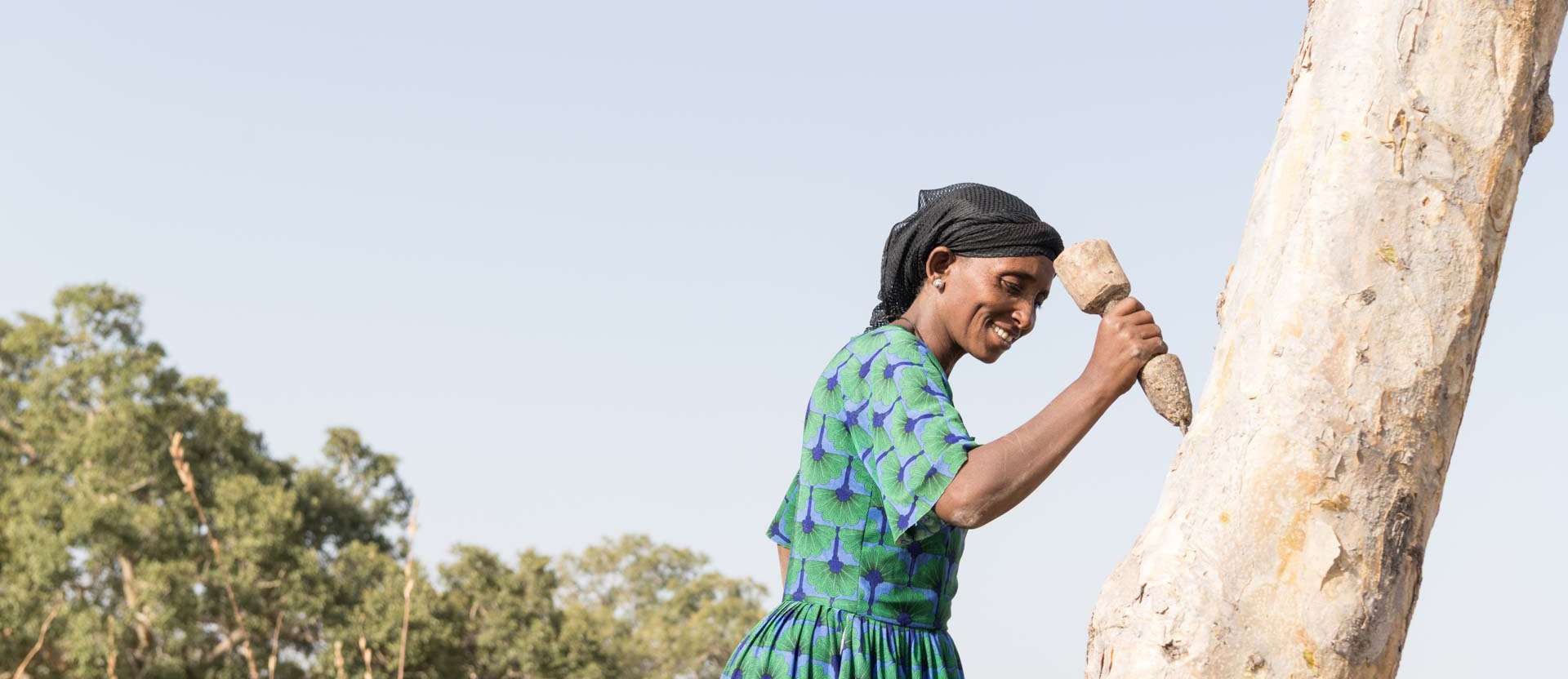
Frankincense for the future
24th June 2021What does frankincense mean to you? Do you burn it as incense to unwind? Or maybe you recognise it from the Christmas nativity. For some people, frankincense is so much more than that. Solomon from a region of Ethiopia characterised by its ancient frankincense forest, told us that for him “...frankincense trees are simply my life.”
Read this blog to find out how frankincense is transforming lives across rural Ethiopia, and how your donations will save a frankincense forest that is on the brink of extinction.
What is frankincense?
Frankincense, an aromatic resin used in products like incense and essential oils, is extracted from frankincense trees, and can provide a lifeline for families that have limited ways to earn an income. Frankincense has been traded around the world for thousands of years and is still produced today as a valuable source of income for families living in rural Ethiopia. By tapping local frankincense trees and selling the resin, people like Solomon can make enough money to care for their families.
But how do you actually extract frankincense? Frankincense tapping happens in the dry season, from mid-October until early June the following year. First, tappers carefully cut the bark to allow the resin to seep out but making sure they don’t damage the tree. Then over about two weeks the resin slowly solidifies in tear-like shapes as it's exposed to the sun and wind. Returning to the cut trees, resin is collected and then put out to dry in frankincense stores before it is ready to be sold at market.
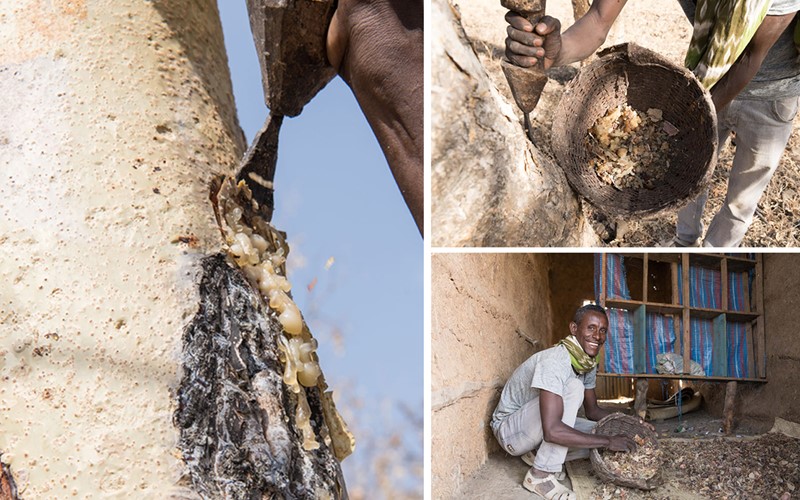
Images: 1. Frankincense tapping; the bark of frankincense trees is cut to allow the resin to seep out. 2. Frankincense collection; after the resin has seeped out and solidified into tear-like shapes, it is harvested. 3. Frankincense sorting; once the frankincense resin has been collected, it is left out to dry and sorted in a warehouse before being sold.
Why are frankincense trees in danger?
A recent study showed that frankincense trees – particularly Boswelia papyrifera, the species found in Ethiopia’s Metema forest – are declining at an alarming rate. They estimate that frankincense production will half in the next 20 years. Deforestation and degradation of precious frankincense forests are making Metema’s local communities increasingly vulnerable to the effects of the climate crisis.
Zemenu Wolde, project coordinator at Tree Aid’s partner organisation SUNARMA, explained how the climate crisis can be devastating for rural families: “The main problem that local communities face is variability in rainfall and temperature which has a huge implication on crop productivity. Crops are being damaged and people are not growing what they expected to produce.”
As crops fail to grow, communities are plunged further into poverty. Tree Aid’s Ethiopia project manager, Cheru Tessema, said: "They cannot protect the environment, then they are pushed further into poverty because the environment is becoming degraded over time.”
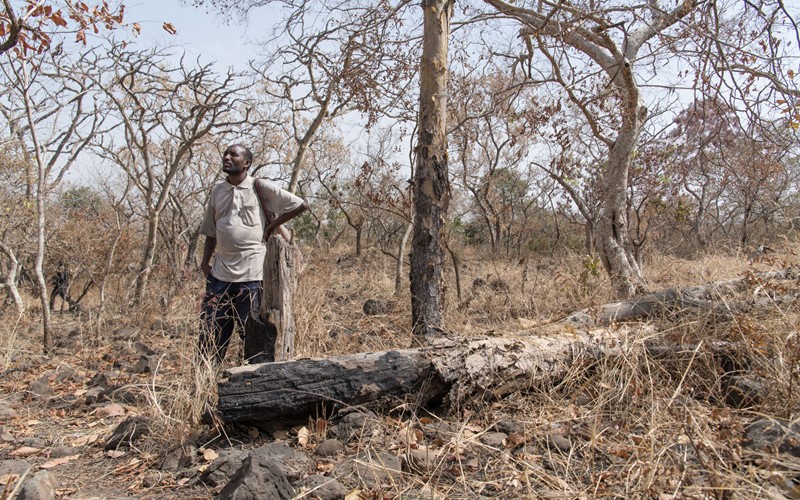
Image: Mohammed Ali standing next to a dead frankincense tree that was damaged in a forest fire in Metema’s frankincense forest in Ethiopia.
How will your donations help to save a frankincense forest from extinction?
Due to deforestation and the effects of the climate crisis, the Metema frankincense forest in Ethiopia could be extinct in 20 years. Urgent action is needed to bring it back from the brink of extinction. But with your support, and match funding from the UK government, Tree Aid will work our local partner SUNARMA to implement the Future Forest project to make sure the forest is around for future generations.
SUNARMA’s Zemenu Wolde told us about how the project will work: “The proposed project is designed to support people to get sufficient income from forest resources like frankincense, while protecting the remaining forests of the area. Producing frankincense will help local people to diversify their economic sources.”
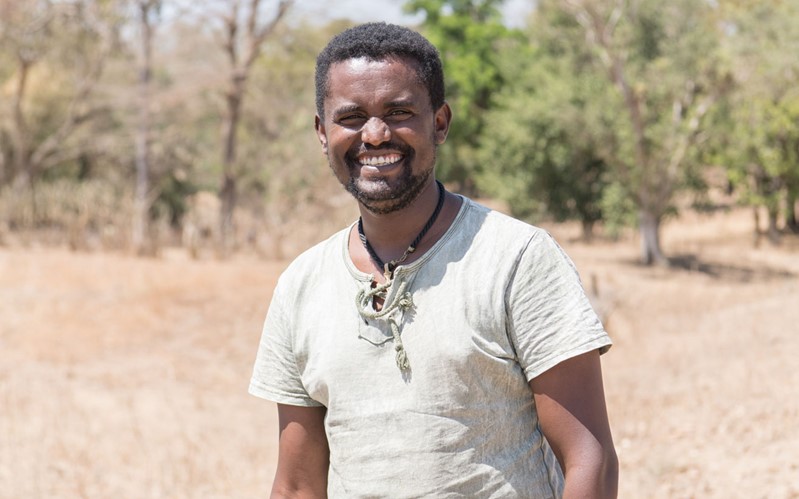
Image: Zemenu Wolde, project coordinator at SUNARMA, a Tree Aid project partner.
Cheru Tessema, Tree Aid's Ethiopia projects manager, says that “the project will help people increase their knowledge, skills and capacity to work with the existing environment and resources available in the forests. The project works both on people's livelihoods and the environment they are living in so that they can co-exist and support each other for a win-win situation.”
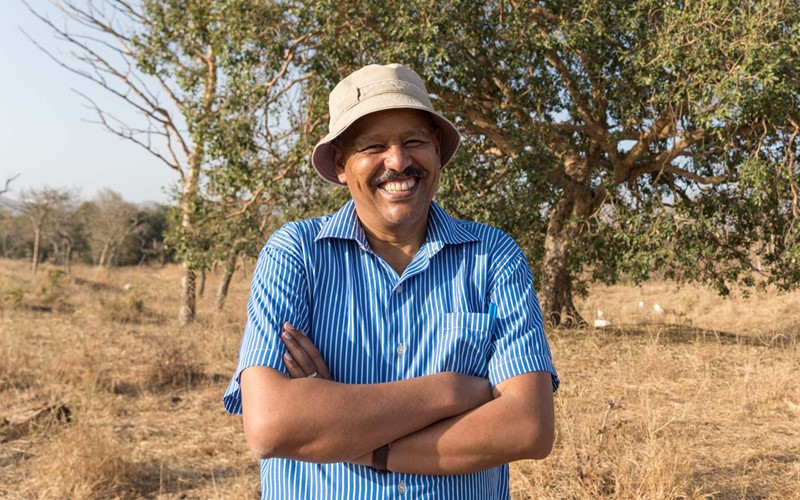
Image: Cheru Tessema, Tree Aid’s Ethiopia project manager.
Part of a bigger movement
By working with communities to protect the forest and its resources, the project will also contribute to the Great Green Wall initiative across Africa, growing trees and restoring land to tackle the climate crisis. Cheru Tessema explains that the project will aim to have “impacts on both the current and future generations by helping people conserve and sustainably utilise the resources they have.”
He said: “My message for people who are willing to support this initiative is that their contribution means a lot. What we do now will go beyond the existing generation. Forests will be maintained and sustained for future use and the resources will be passed onto the next generation. If local communities engage in frankincense production, not only will they invest in protecting the frankincense forest, it will also diversify their economic sources and improve livelihoods.”
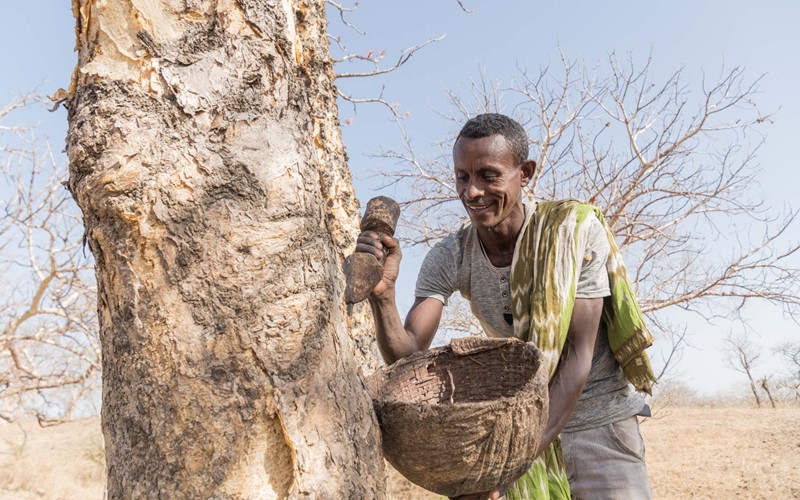 Image: solomon Habte extracting frankincense from a frankincense tree in the Metema forest in Ethiopia.
Image: solomon Habte extracting frankincense from a frankincense tree in the Metema forest in Ethiopia.



